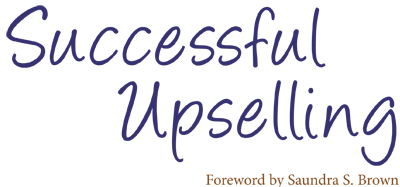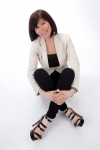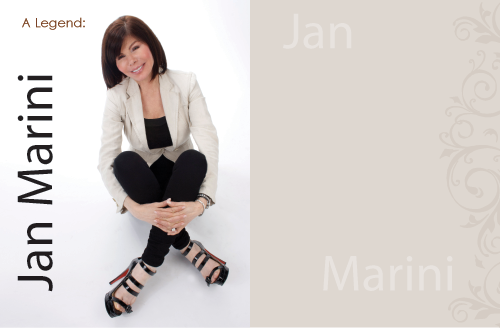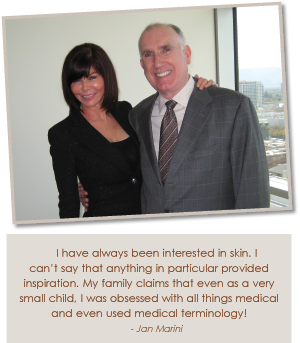Food that you offer to your clients cannot be from your home and must be sealed when they reach your clients hands. Aestheticians, nail technicians, and hair technicians must also eat in designated kitchen areas. It is also vital to follow OSHA’s Universal Precautions rule. Treating every body fluid as though it is contaminated will protect you and your clientele from exposure to bacterial, viral, and fungal diseases. Some examples of these diseases include Hepatitis A and B, HIV, Herpes Simplex 1 and 2, Syphilis, Impetigo, and other illnesses, such as, Tuberculosis and the common flu.
In aesthetics, we are taught to treat the skin at the cellular level. What many take for granted is that contamination and disease operate at the cellular level. Legislation does not require persons infected with a transmittable disease to disclose that information. This is due to the lack of public education, which results in fear and mistreatment of individuals who have an illness. Bloodborne and Sexually Transmitted Diseases are not the only diseases to be taken with caution. It is important to use your best judgment with clients who appear to have a common cold or flu. Your “Golden Rule” should be Universal Precautions.
How do we Protect Ourselves?
First and foremost, wash your hands with soap and water, or clean them with an antibacterial hand gel. This is the most essential act you can practice. Water alone does not kill germs; soap is a necessity. To be sure you’re cleaning your hands adequately, sing yourself a nursery rhyme or your favorite song, and be sure that you get between your fingers, the backside of your hands, and your wrists. This will kill the germs on your hands and prevent cross-contamination onto yourself, surfaces, and/or clients. In addition to hand-washing, protecting your hands with the use of gloves is necessary when performing many services, but a requirement for performing any type of facial service in which extractions are done. It is also necessary to wear gloves when performing waxing treatments. Wearing gloves during these treatments will help protect you from bloodborne pathogens and any other viral or bacterial contamination that may be present in body fluids. Gloves are disposable, single-use items that need to be disposed of immediately after their use. Do not wash or reuse your gloves. In addition, remember to remove your gloves before you leave your treatment room and potentially touch door handles and walls. Remember Universal Precautions.
Some in the industry may argue that more protection is needed for specific services. For example, several aestheticians in our skin care facility have complained of pimples from their clients bursting onto their face when extracted. Sebum is a body fluid and can carry microorganisms. In this case, protective eyewear or face shield may be necessary. Washing your hands and wearing gloves are two important habits to remember at work; the third requirement in your trinity of sanitation is Personal Protective Equipment (PPE) or Body Substance Isolation (BSI), according to OSHA and CDC. PPE and BSI essentially mean the same thing; physically protect yourself. This includes gloves, goggles, face shields, and clothing. Protective clothing prevents the potential transfer of disease from your clothing to other public areas, or your home. Aprons and smocks should not be worn outside the facility and need to be washed daily.
The CDC has protocols that should be followed for the cleaning of linen. First and foremost, wear gloves when handling soiled linen and do not move soiled linens around too much, movement can spread microorganisms into the air. Water temperatures should be 160 degrees Fahrenheit and disinfecting cleaners, such as, bleach should be used in proper concentrations. Soiled linen and clean linen must be stored separately so there is no cross-contamination. Following these simple steps will maintain clean beds for use.
An additional concern is sharps disposal. Sharps are considered objects that can penetrate the skin, such as needles and lancets. Needles can puncture gloves and the skin, which can increase your risk of contracting a bloodborne illness. These objects need to be disposed of in the appropriate red sharps container. Other equipment used in the cosmetic industry that can pose a risk include: pointed tweezers, cuticle nippers, nail trimmers, scissors, and razor blades. This equipment is manufactured out of metal because metal is non-porous and can be cleaned with the appropriate EPA certified sanitizing cleanser and by autoclaving. If you do not use an autoclave, the only safe option is complete immersion in EPA certified disinfectant, or purchase single-use items to use on your clientele.
Effective Disinfectants
Disinfectants that have been approved by the EPA are bactericidal, virucidal, and fungicidal. Approved disinfectants are effective in killing microorganisms until they become contaminated with used solutions or by hair, dirt, and debris. Once you use a solution to disinfect tools and equipment, do not pour the used solution back into the clean solution. Disinfecting solutions used to soak equipment must be replaced daily, or if used throughout the day, more than once. Common household names for some EPA approved disinfectants are: Clorox, Pine Sol, Lysol, and Formula 409. These brands have specific cleaners that are EPA approved and they will have the EPA approval on the product label.
Effective disinfectants that have been approved by the Cosmetology Commission and can be used are 90 percent ethyl alcohol, or higher (70 percent or lower is not effective) and chlorine bleach. When used properly and in the correct concentrations, a chlorine bleach solution is an effective, multi-purpose disinfectant that is appropriate in cleaning blood and other body fluids. Bleach solutions need to be mixed daily and should not be reused. Containers that are used to store bleach need to remain covered or closed to prevent contamination of your clean solution and to block fumes. It is also important to keep bleach solutions away from sunlight, other chemicals, and fire. Isopropyl and ethyl alcohols are lower level disinfectants, making them ineffective in cleaning and decontaminating blood and other body fluids, but beneficial in light cleaning. Just like EPA disinfectants and chlorine bleach, alcohol used for cleaning is contaminated once it has any form of dirt or debris in it.
Another method of disinfecting tools and equipment, which is mentioned above, is by using an autoclave. This machine uses extremely high temperatures with steam to kill bacteria, viruses, and fungi. Tools that generally require autoclaving are non-porous metal tools; the extreme heat will melt plastics. Acceptable substitutions for autoclaving include ultraviolet light and dry heat. Proper disinfecting of tools and equipment including counters, floors, and linens is necessary. Having non-porous flooring and countertops throughout the facility will make killing microorganisms and visible clean-up easier.
Keeping Healthy Practices
The field of cosmetology has a scope that ranges around skin, nails, and hair. Although each technician has a specialty in his/her field, each one of us must recognize a condition that would prevent the act of performing a service on a client. Open communication with your clients will note changes in regimens, personal habits, and new concerns that can be addressed. Knowing your client will help you in recognizing health issues, including but not limited to, weakness, fatigue and loss of color in the skin. Recognizing red flags will alert you and help you take the appropriate precautions. Do not perform services on clients who are obviously ill or have a skin, hair, or nail condition. When obviously ill people come in for services, graciously ask them to reschedule so they may rest and gain their strength, then disinfect appropriately. When treating clients remember Universal Precautions, you cannot see a microorganism. Aestheticians, nail technicians and hair technicians must follow the trinity of personal protection. Wash your hands, wear gloves when necessary, and adorn a smock or apron.
Aesthetics
Aestheticians must take care to properly disinfect equipment, extractors, and tweezers after each client with the appropriate chlorine bleach solution or EPA registered disinfectant. Lancets (if allowed in your state) that are used must be disposed of in the appropriate red sharps disposal unit and any gloves that were contaminated with body fluid (sebum and/or blood) must be wrapped in a plastic bag, and then disposed of accordingly. Remember when removing your gloves, pull from the wrist towards the fingers, enveloping the glove inside-out. When the first glove has been removed, enclose it in the opposite gloved hand and remove the other glove in the same manner, dispose, then wash your hands or disinfect with antibacterial hand gel. Single-use items must be disposed of accordingly as well. These items include cotton pads and balls, plastic or wooden applicators, tissues, and fabric items that are used to touch the skin.
Change your towels as often as you change clients. Towels act as an effective tool for wiping your hands and holding your clients hair back, but can easily be contaminated with hair (potential lice infection), skin cells, bacteria, fluids, and other contaminants. Robes that clients use around the facility and in the rooms also need to be changed in-between clients. Remember, when washing your linens, keep soiled linens away from clean ones. Do not disturb soiled linen too much, as microorganisms can be transferred to the air, and use the appropriate bleach concentration and water temperature when washing.
Appropriate care for products that are used in treatment rooms is just as important as keeping your disinfecting solutions clean. Never double-dip into product containers. Touching disposable spatulas onto the skin then back into the container will contaminate your product, therefore, decreasing its shelf life and reducing its effectiveness. This simple task can save you money by not having to replace your product as often.
Waxing Services
First and foremost, it is important that you wear gloves for waxing services. When removing the hair from the follicle, bacteria that may reside inside the follicle could be exposed. Waxing can be a sticky situation; the safest waxing procedure to be followed will start with clean skin. Using a pre-prep antiseptic gel, spray, or liquid will kill microorganisms on the skin surface, giving you a good, clean palette with which to work. In addition to cleaning the skin, antiseptic cleansers can also help prevent breakouts and/or ingrown hair after a waxing service. For facial waxing, it is best to use a facial cleanser on the skin. Always use a clean, unused spatula each time you touch the spatula to the wax and do not leave spatulas in the wax. Be observant when waxing your client. If there is any hair residue on the spatula, the hair could reside in the wax pot, contaminating your supply. Remember Universal Precautions, the spatula that touched the skin could have come into contact with microorganisms that could potentially harbor in your wax supply. Do not reuse wax that has been in contact with a client’s skin, even if the wax is filtered. Filtering wax removes particles that can be seen, but does not remove microorganisms. Clean and disinfect your wax pot by following the manufacturers instruction, between each wax refill, or once every month.
Hair Technicians
Tools of the trade in the salon include shears, razors, edgers, guards, combs, brushes, perm rods, needles, and bowls. Each piece of equipment that is used on a client must be cleaned and disinfected, prior to use on your next client. This equipment must be scrubbed with soap and water, and then immersed for up to 20 minutes in disinfectant solution at the end of the day. Hairpieces and tracks must be stored separately in a closed container before they can be used. The floor must be swept between clients. Keeping the floor in good, clean condition is just as important as having clean equipment. Hair can easily contaminate disinfecting solutions and be transported outside the salon. For those facilities offering waxing services for their clientele, be sure to follow the appropriate waxing procedures.
Nail Technicians
There are many rules and regulations that need to be followed when handling nails. The tools that are used to perform manicures and pedicures range from non-porous equipment that can easily be sterilized and autoclaved, single use items that can be discarded, and porous items that must be cleaned and maintained carefully or discarded altogether. Non-porous equipment includes cuticle trimmers, metal pushers and files, scissors, clippers, tweezers, and drill bits. Carbide, diamond, or metal drill bits must be clear of any visible debris and immersed in disinfecting solution, autoclaved, or ultrasonic cleaner prior to use on each client. All other non-porous equipment must be disinfected and cleaned prior to each client, in addition to disinfectant immersion at the end of the day. Nail brushes, pumice stones, files, blocks, and other porous equipment must be free of visible debris and disinfected between each client. Any porous equipment that comes into contact with broken, damaged, or infected skin must be disposed. Porous equipment easily absorbs body fluids and harbors microorganisms. Disposable equipment includes cotton balls, wipes, paper towels, and wooden sticks. Other equipment that needs to be changed between clients includes towels and bowls.
Foot spas are becoming a trend of the past due to their bad reputation for harboring bacteria. This resulted from failure to appropriately clean the entire unit; including screens and the filtration system. Keeping record of every cleaning treatment is mandatory by most states. Foot spas must be cleaned and disinfected between clients and thoroughly washed and flushed with bleach daily. The daily cleaning also includes immersing screens and other small parts in disinfecting solution. In addition to in-between and daily cleaning, the foot spa unit must also be flushed with warm water and bleach for 10 minutes every other week. This will aid in killing any harmful mycobacterium that can reside in the plumbing and potentially cause an infection of the feet and legs.
Just as aestheticians must be aware of their client’s skin care regimen, nail technicians must be observant and open with their clientele. Ask them if they shaved or waxed the hair on their legs prior to their appointment. Waxing opens the hair follicle, which makes it more susceptible to infection, while shaving can cause cuts on the skin that, although not bleeding, are considered open wounds that bacteria can enter through. Carefully inspect your clients’ skin and nails, as they may not always notify, or be aware that he/she may have a skin infection or fungus. These bacterial diseases can contaminate other surfaces along with the foot spa basin, which could be contracted by other clients or yourself. Disinfect your workstation after each client.
In The End
Remember to play by the rules and use your best judgment when it comes to maintaining a safe and clean work environment. Do not perform any services that are out of your scope of practice, or use any type of practice, procedure, or product that has been banned. Keep up-to-date on all changes in the cosmetic and labor industry to assure a safe, clean, and profitable work environment. Federal and state legislation is dynamic and changing to protect the public. Over the past years, some products and practices have been banned by state cosmetology commissions. Do you know what they are for your state? If not, maybe it’s time you refreshed your knowledge of state cosmetology laws. Federal laws that are carried out by OSHA, CDC, and FDA are active to prevent physical harm and the spread of disease. Your “Golden Rule” of sanitation should be OSHA’s Universal Precautions and your sanitation trinity: wash your hands, wear gloves when necessary, and wear a smock/apron. Practice your housekeeping schedules by the day, week, and month, always sanitize between clients and when in doubt, clean it again. Cleanliness is not difficult, it can easily become a part of your everyday routine, and will help in keeping you safe from state fines, penalties, personal injury and/or illness.
For more information about state and federal cosmetology laws visit www.cdc.gov, www.osha.gov, www.fda.gov, or your local state cosmetology commission.
Tina Zillmann is a paramedical aesthetician, having a focus in acne care and light-peeling treatments. She is also the owner of the Skin Rejuvenation Clinique, Inc., a facility that services to pre- and post-operative patients. Zillmann also acts as a national educator for Advanced Rejuvenating Concepts™. Recently, she was the recipient of the Entrepreneur Spirit Award from the National Association of Women Business Owners.





 Those who know Jan Marini refer to her as a visionary. While Jan might agree in principle, she sees this characterization as both a strength and a weakness. She envies those who are able to savor the moment. Where others view life in snapshots that capture real time, Jan sees broad borderless landscapes and endless possibilities. She does not see a product, she sees a business and in that same instance her mind is flooded with the business plan and all the accompanying details. Even when she is not envisioning empires, she is never satisfied with the status quo.
Those who know Jan Marini refer to her as a visionary. While Jan might agree in principle, she sees this characterization as both a strength and a weakness. She envies those who are able to savor the moment. Where others view life in snapshots that capture real time, Jan sees broad borderless landscapes and endless possibilities. She does not see a product, she sees a business and in that same instance her mind is flooded with the business plan and all the accompanying details. Even when she is not envisioning empires, she is never satisfied with the status quo.